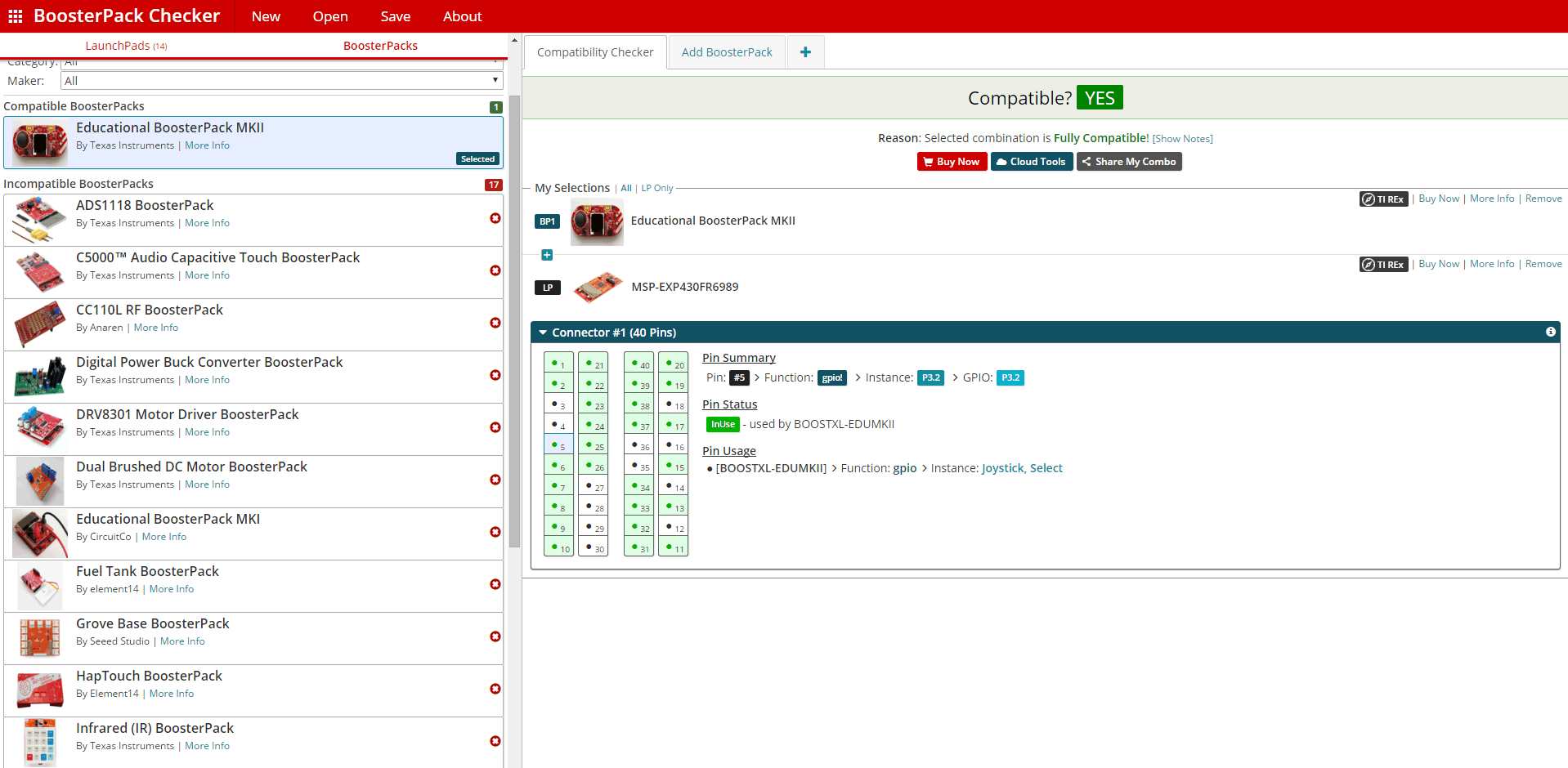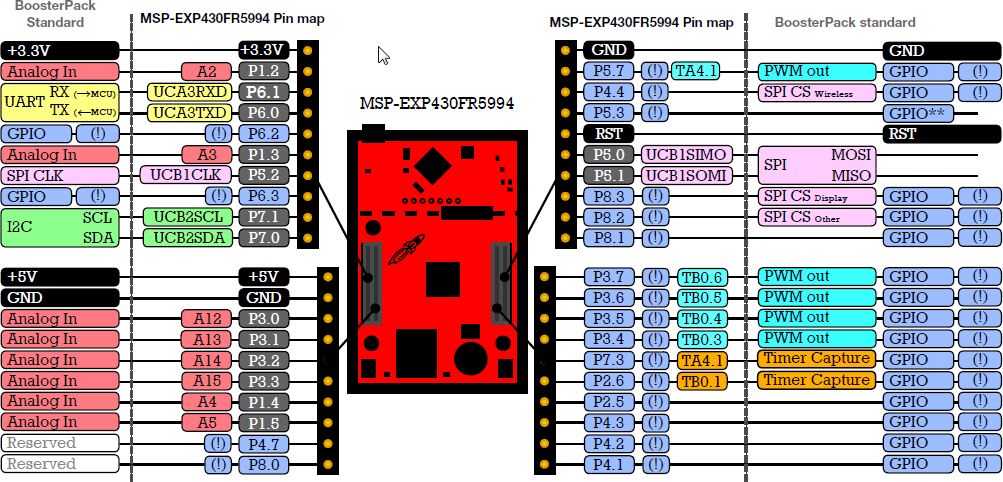SLAU678C March 2016 – November 2022
- Abstract
- Trademarks
- 1Getting Started
- 2Hardware
- 3Software Examples
- 4Resources
- 5FAQ
- 6Schematics
- 7Revision History
2.7 BoosterPack Plug-in Module Pinout
This LaunchPad development kit complies with the 40-pin LaunchPad development kit pinout standard. This standard was created to aid compatibility between LaunchPad development kits and BoosterPack plug-in modules across the TI ecosystem.
The 40-pin standard is compatible with the 20-pin standard that is used by other LaunchPad development kit like the MSP-EXP430FR4133. This allows some subset of functionality of 40-pin BoosterPack plug-in modules to be used with 20-pin LaunchPad development kits.
While most BoosterPack plug-in modules are compliant with the standard, some are not. The MSP-EXP430FR5994 LaunchPad development kit is compatible with all 40-pin BoosterPack plug-in module that comply with the standard. If the reseller or owner of the BoosterPack plug-in module does not explicitly indicate compatibility with the MSP-EXP430FR5994 LaunchPad development kit, compare the schematic of the candidate BoosterPack plug-in module with the LaunchPad development kit to ensure compatibility. Keep in mind that sometimes conflicts can be resolved by changing the MSP430FR5994 MCU pin function configuration in software.
To check the compatibility of your desired BoosterPack plug-in module for your design, with a LaunchPad development kit of your choice, you can use the BoosterPack Checker tool (see Figure 2-9). This allows you to select any LaunchPad development kit we offer and determine its compatibility with any number of BoosterPack plug-in module that we offer. You can also add your own BoosterPack plug-in module to check its compatibility as you prototype that next design.
 Figure 2-9 BoosterPack Plug-in Module Checker Tool
Figure 2-9 BoosterPack Plug-in Module Checker ToolFigure 2-10 shows the 40-pin pinout of the MSP430FR5994 LaunchPad development kit.
Software configuration of the pin functions plays a role in compatibility. The LaunchPad development kit side of the dashed line shows only the applicable function for conforming to the standard. However, each pin has other functionality that can be configured by the software. See the MSP430FR5994 data sheet for more details on individual pin functions.
 Figure 2-10 LaunchPad Development Kit to BoosterPack Plug-in Module Connector Pinout
Figure 2-10 LaunchPad Development Kit to BoosterPack Plug-in Module Connector Pinout